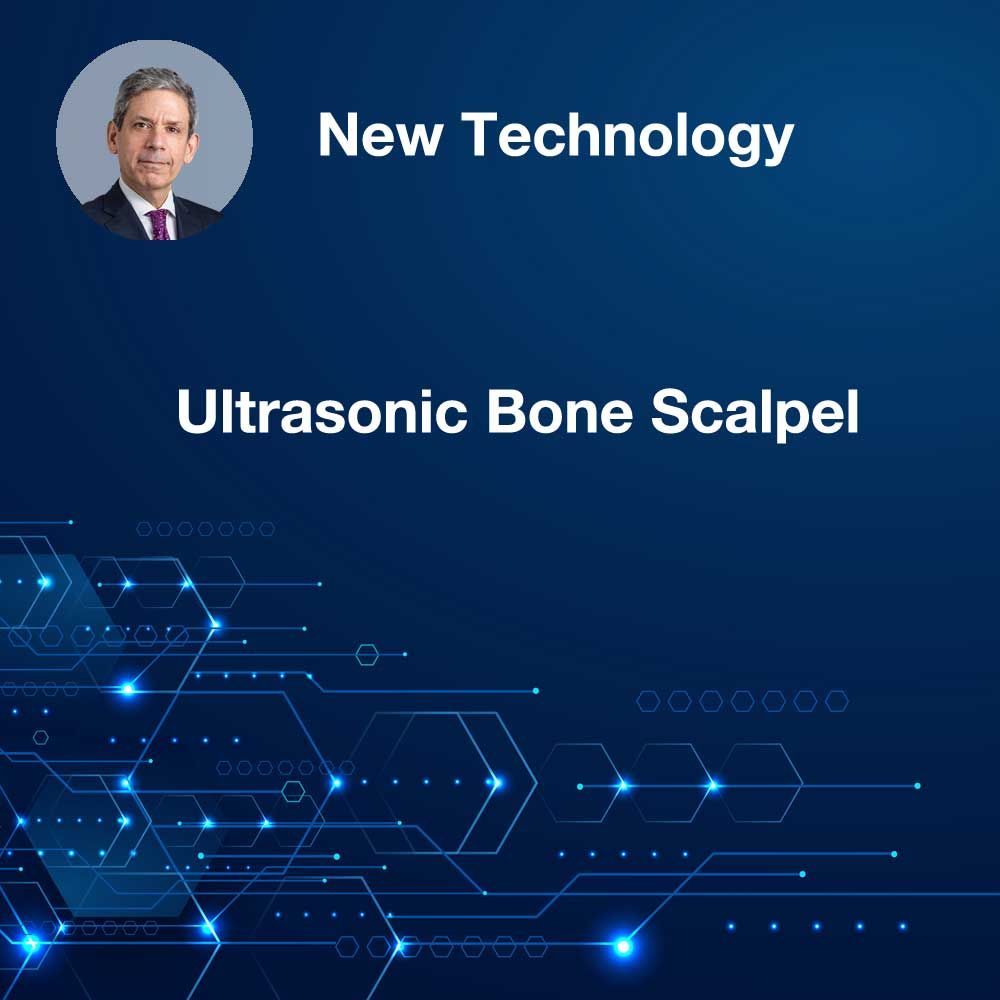Ultrasonic Bone Scalpel
What is the Ultrasonic Bone Scalpel?
Spine surgery has always been considered to be technically demanding, at least in part because of the close proximity of vital soft tissue structures.
The Ultrasonic Bone Scalpel (UBS) is a surgical instrument that uses ultrasonic vibrations to cut through bone while minimizing damage to surrounding soft tissues. Unlike traditional bone-cutting tools, the UBS does not rely on mechanical force or heat. Instead, it uses high-frequency ultrasonic vibrations to fragment the bone, allowing for precise, controlled cuts. The technology is based on piezoelectric vibrations which were originally patented in 1988, and the technology attempts to address the both surgical accuracy and patient safety. In late 2021, it was approved for use in the United States.
Advantages of the Ultrasonic Bone Scalpel
The Ultrasonic Bone Scalpel offers several advantages over traditional bone-cutting tools. Firstly, it provides greater precision, allowing surgeons to make accurate cuts with minimal risk of damaging surrounding tissues. This is particularly beneficial in spine surgery, where the spinal cord and nerves are often in close proximity to the surgical site.
Secondly, the UBS reduces bleeding during surgery. The ultrasonic vibrations cause the blood vessels in the bone to constrict, reducing blood loss and improving visibility for the surgeon. This can lead to shorter operation times and a lower risk of complications.
Thirdly, the UBS can reduce post-operative pain and speed up recovery. By minimizing damage to soft tissues, the UBS can reduce inflammation and swelling after surgery, leading to less pain and a quicker return to normal activities.
The Ultrasonic Bone Scalpel in Spine Surgery
In spine surgery, the UBS has been used in a variety of procedures, including spinal fusion, laminectomy, and discectomy. In spinal fusion, the UBS can be used to prepare the vertebral bodies for fusion, removing the outer layer of bone to expose the spongy bone underneath. This can facilitate better fusion and improve the success rate of the surgery.
In laminectomy and discectomy, the UBS can be used to remove bone and disc material, providing access to the spinal canal and nerve roots. The precision of the UBS allows surgeons to remove only the necessary bone and disc material, preserving the structural integrity of the spine and reducing the risk of instability.
Takeaway
While the UBS has many advantages, it is important to remember that this is just one tool in a surgeon’s arsenal. The success of spine surgery depends on many factors, including the skill and experience of the surgeon, the specific condition being treated, and the overall health of the patient. It is a promising step forward, but not some panacea.
Before surgery, Dr. Goldstein will carefully review your specific case, and discuss and recommend the optimal approach to your unique situation. Our goal is to treat our patients’ spinal conditions in the most effective and safest ways possible - and to return them to an active and pain free life. If you are a candidate for certain types of surgery, Dr. Goldstein may talk with you about the possibility of using an ultrasonic bone scalpel.

Ultrasonic bone scalpel in spine surgery - National Library of Medicine
